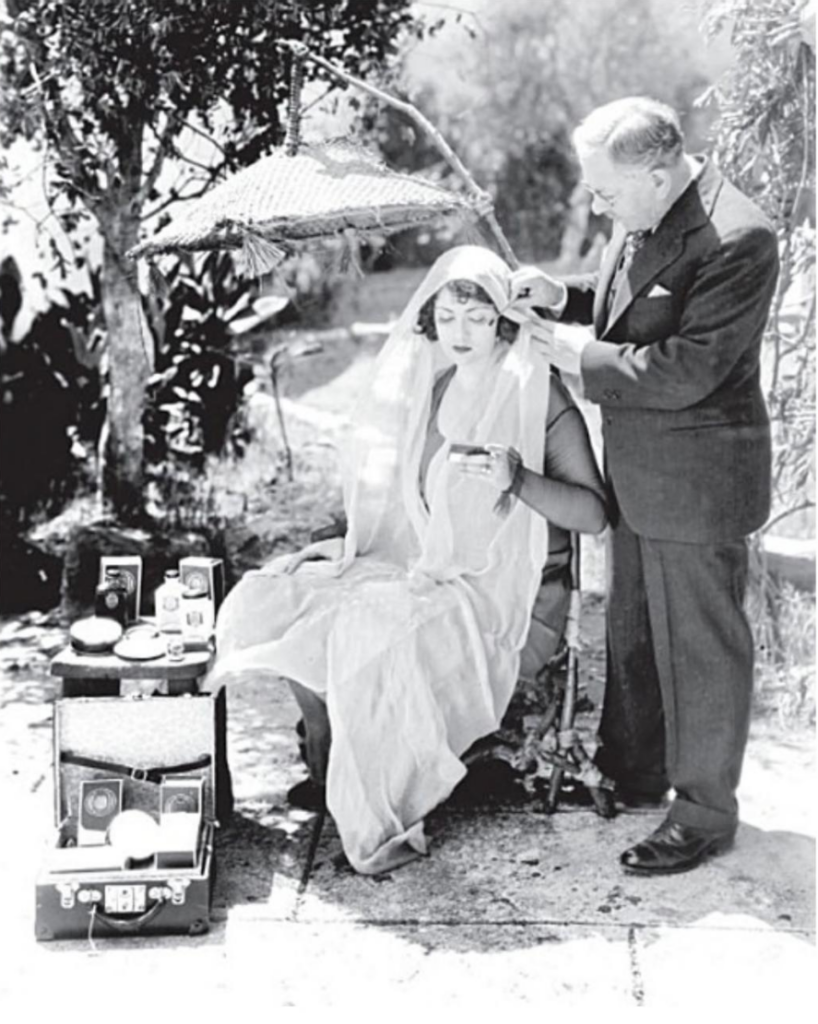This post was written by Erika Thomas, author of Max Factor and Hollywood: A Glamorous History
Anyone who has purchased or applied a beauty product to their face within the last 90 years, be it moisturizer, sun block, exfoliant, blush, lipstick and the like, chances are, you’ve got Max Factor to thank for it.
Although there had been companies that sold theater greasepaint and commercial cosmetics around the same time that Max Factor first introduced Society Cosmetics to the market during the 1920s, none were as groundbreaking or glamorous as Factor’s formulations. They were appealing because Max Factor employed the use of the most beautiful women on the planet (Hollywood stars such as Loretta Young, Joan Crawford, Hedy Lamar and others) to advertise his products in the wildly popular fan magazines of the era, such as Photoplay and Screenland. Knowing the female demographic of the movie going public would want to achieve the same flawless look for herself, Factor’s makeup ads were irresistible. What’s more, the products themselves were quality through and through. His greasepaint created a look that smoothed and perfected the complexion. His rouges highlighted cheekbones and provided contour for shapeless faces. The lipsticks were non-drying, longwearing and contained the finest ingredients, ultimately creating a complimentary look for every woman who wore them.

Max Factor was more than just someone who manufactured cosmetics. To the Polish immigrant and expert wigmaker, beauty was an exact science. It wasn’t something to be left to guesswork or chance, nor was it something that every woman was born with. In fact, to Max Factor, beauty was a thing that could be achieved with meticulous planning, mapping and studying. Factor created cosmetics that proved his science; he pioneered a special beauty apparatus—the famed Beauty Calibrator during the 1930s—a metal contraption containing hundreds of screws and points of adjustments designed to fit over the head and determine a woman’s most beautiful facial features.
What’s more, glamour was not something a woman was born with; but rather, glamour was created. The makeup guru himself—often called the “Father of Modern Makeup”—was known to have said, “You are not born glamorous. Glamour is created.” This was great news for Factor and the hoards of adoring women who clamored for his innovative color cosmetics. Not only was Max Factor the first to manufacture make-up for motion pictures; he was the first to make it available for every day use of the general public.
Max Factor and Hollywood; A Glamorous History takes a detailed look at the many achievements of the legendary makeup artist and the countless cosmetics milestones he was responsible for. His glamour factory at the corner of Hollywood and Highland Avenue—aptly located in the heart of Tinsel Town—would be the place the most famous signature looks in the world would be created during Hollywood’s golden era—ones that are just as relevant today as they were then. With his scientific approach, Max Factor created timeless glamour and classic beauty that remains en vogue all of these years later. Women today still strive to achieve the looks of Jean Harlow, Marilyn Monroe, Jane Russell and the many unforgettable faces first created by Max Factor.

